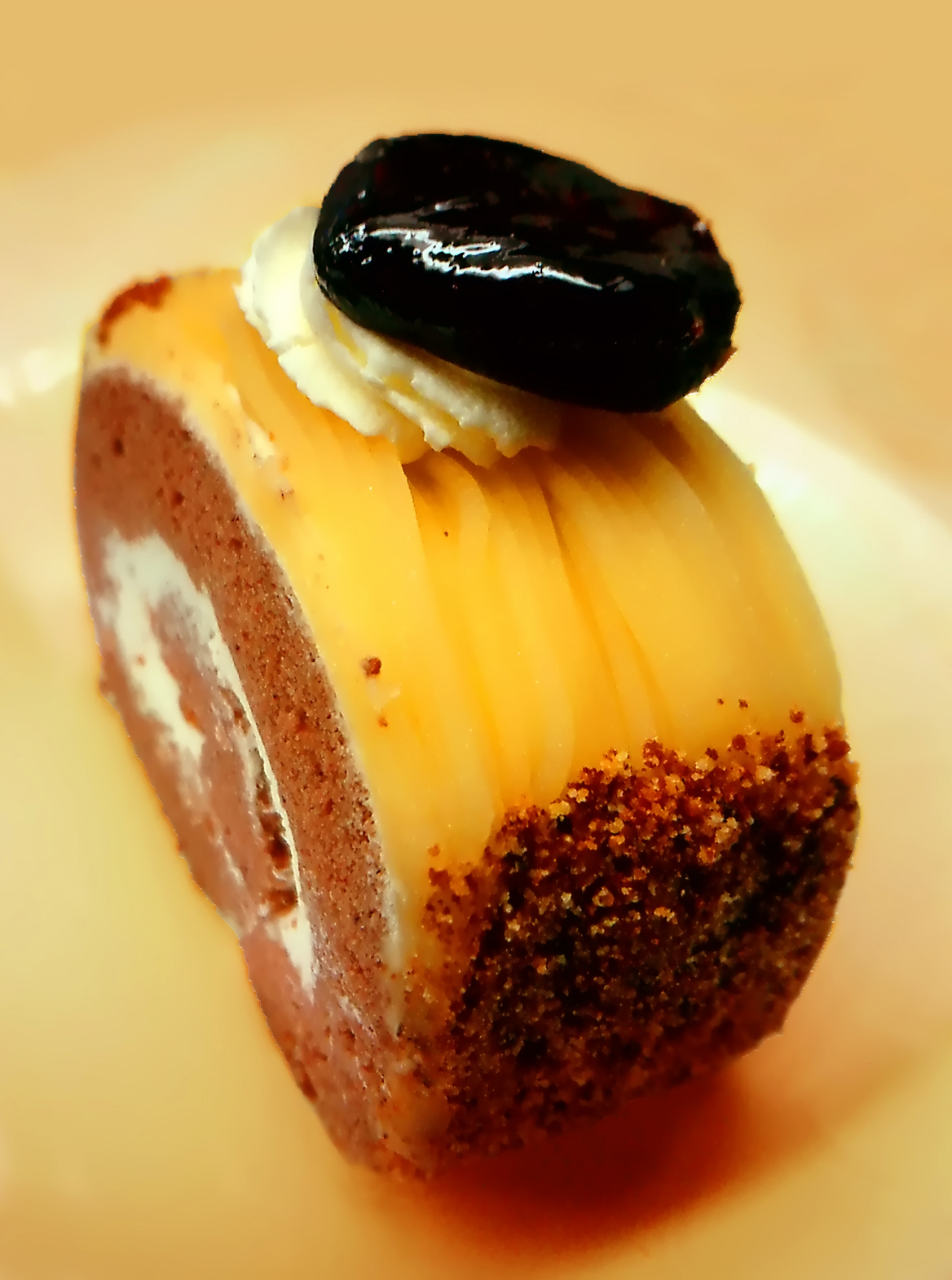
The same dish is also called marrons chantilly in 1889. This recipe does not specify that the chestnuts are formed into vermicelli, but an 1892 article does, and clearly says that torche is the Alsatian name for what is called Mont Blanc in southern France.

Īn unambiguous reference to the Mont Blanc as a dish of puréed chestnuts topped with whipped cream is documented in 1885, called torche aux marrons, and considered an Alsatian dish. Sources do not specify exactly how it was prepared, but it was said to be "a true monument which will make his name immortal, that is, a dish that all mouths will praise". Ī dish called entremets du Mont-Blanc or simply montblanc, described as a sweet combination of chestnuts and cream, is said to have been invented by the Dessat(s) pastry-shop by 1847. The Mont Blanc has three distinctive characteristics: it is sweet, it is made of chestnut purée in the form of vermicelli served as a mount or a ring, and it is heaped with whipped cream.Ī sweet dessert of puréed chestnuts passed through a sieve to make vermicelli shapes-but without the characteristic whipped cream of the Mont Blanc-is referred to as (compote de) marrons en vermicelle in various French cookbooks starting in 1842. Even a Swiss or German recipe of whole chestnuts cooked with cream and butter and seasoned with cinnamon is treated as a savory dish in 1844. However, these dishes are not desserts, and are not served with whipped cream. Mont Blanc is popular in France, Italy, Hong Kong, Shanghai, Japan, Slovakia, Switzerland, Hungary, and northwestern Romania.Ĭhestnut purées have a long history as a soup, porridge, or side dish for meats, especially in regions where chestnuts are a staple food. For a long time considered old-fashioned and heavy, it has become newly popular in the 2010s in a lighter form at trendy shops like Pierre Hermé, with many variations. Mont Blanc has been an autumn and winter favorite at many Parisian pâtisseries, notably the Parisian tea shop Angelina, where it has been a specialty since it opened in 1903.

The name comes from Mont Blanc, as the dish resembles a snow-capped mountain.

It was created in nineteenth-century Paris. Dust with Powdered Sugar to make the cake look like snow-capped Mont Blanc.A Mont Blanc (or Mont-Blanc aux marrons) is a dessert of sweetened chestnut purée in the form of vermicelli, topped with whipped cream. Pipe out the Chestnut Paste Cream on top of the cake and decorate with remaining Chestnuts.Slice the cake in half and spread over the Cream combined with chopped Chestnuts, then sandwich with cake top.Add Sugar, Rum and coarsely chopped Chest Nuts to the rest of the whipped Cream and mix to combine.This Chestnut Paste Cream goes into a piping bag attached with a small round tip. Place Chestnut Paste in a bowl, add Rum and mix to loosen, then add half of the whipped Cream and mix well.Mix Eggs, Sugar, Milk, Oil, Vanilla and Self-Raising Flour until smooth, pour into the tin and bake for 30 minutes or until golden.Line side and base of 18cm springform cake tin with baking paper. The cake always ends up domed shape which is good for the ‘Mont Blanc’. This ‘Mont Blanc Cake’ doesn’t look so fancy like the one she bought me that night, but it tastes wonderful and of course it always brings back the memory.Ģ00g Chest Nuts *peeled & cooked (canned whole chestnuts), coarsely chopped, save some for decoration When they finally came home, I discovered where they had been, then my daughter offered me the cake. And luckily the cake shop was still open that night. She remembered that I once told her that ‘Mont Blanc Cake’ was my absolute favourite. She navigated him to a cake shop, where she had seen a particular cake before. One winter evening, it was already dark when my husband came home from work and my daughter asked him to drive her to a place. My daughter was only 6 years old then, and she knew I was not well.

When we were living in Japan for a short period of time, my condition deteriorated and I was just staying home being sad.


 0 kommentar(er)
0 kommentar(er)
